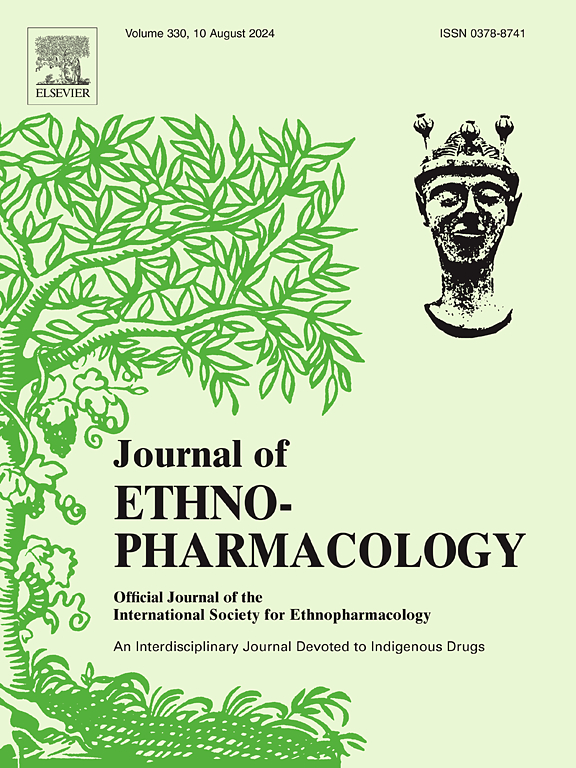A novel polysaccharide from Citrus aurantium L.: Structural properties and antitumor activities in vitro and in vivo
IF 4.8
2区 医学
Q1 CHEMISTRY, MEDICINAL
引用次数: 0
Abstract
A novel cold-water-soluble polysaccharide (CALP-1-1) was isolated and purified from Citrus aurantium L. Besides determining its in vitro and in vivo anti-tumor activities, its structure was characterised. The results reveal that CALP-1-1 mainly consists of Rha, Ara, Gal, GalA, and GlcA (molar ratio, 1:14.56:19.27:2.27:1.29) with three main linkages. Its average molecular weight was 2.04 × 103 kDa. Moreover, the triple helix structure of CALP-1-1 was proved by Congo-red and circular dichroism (CD). The in vitro experimental results demonstrate that CALP-1-1 significantly inhibited the proliferation of HepG2 cells with typical apoptotic features by inducing cell cycle arrest in the S phase. Furthermore, in vivo anti-tumor experiments suggest that CALP-1-1 could induce H22 solid tumor cells apoptosis and exhibit anti-tumor effects by protecting immune organs and intensifying the secretion of immune cells (macrophages, lymphocytes and NK cells). In conclusion, CALP-1-1 might be a promising component for cancer treatment.

求助全文
约1分钟内获得全文
求助全文
来源期刊

Journal of ethnopharmacology
医学-全科医学与补充医学
CiteScore
10.30
自引率
5.60%
发文量
967
审稿时长
77 days
期刊介绍:
The Journal of Ethnopharmacology is dedicated to the exchange of information and understandings about people''s use of plants, fungi, animals, microorganisms and minerals and their biological and pharmacological effects based on the principles established through international conventions. Early people confronted with illness and disease, discovered a wealth of useful therapeutic agents in the plant and animal kingdoms. The empirical knowledge of these medicinal substances and their toxic potential was passed on by oral tradition and sometimes recorded in herbals and other texts on materia medica. Many valuable drugs of today (e.g., atropine, ephedrine, tubocurarine, digoxin, reserpine) came into use through the study of indigenous remedies. Chemists continue to use plant-derived drugs (e.g., morphine, taxol, physostigmine, quinidine, emetine) as prototypes in their attempts to develop more effective and less toxic medicinals.
 求助内容:
求助内容: 应助结果提醒方式:
应助结果提醒方式:


